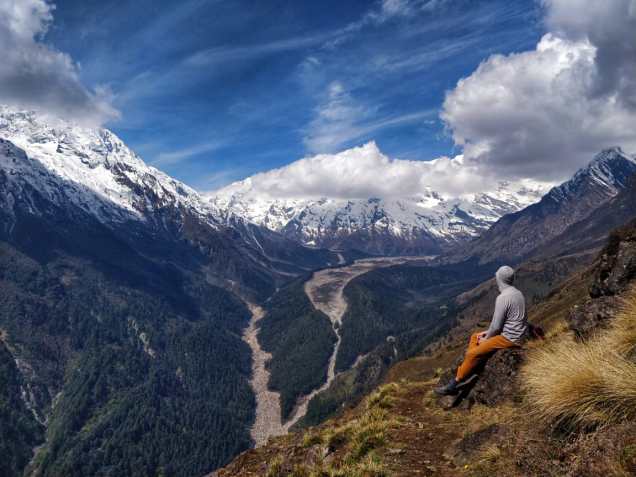I am currently a PhD student and Distinguished Doctoral Fellow in the Department of Geosciences at the University of Arkansas in Fayetteville. I will finish my PhD in June 2024. My expertise combines numerical modeling with a passion for challenging field work to solve complex problems related to climate change. I am motivated to understand the forces driving change on glaciers, ice sheets, and mountain environments. I am also an experienced teacher. Before I began my PhD, I earned a bachelor’s degree in physics from and I taught high school physics and math for five years at Idyllwild Arts Academy, a boarding high school in California.

My PhD research is driven by the need to understand the development of hummocky topography on debris-covered glaciers. More than 1.5 billion people in Asia depend on water sourced, in part, from debris-covered glacier melt. As these glaciers melt, they develop a complex, hummocky surface that increases melt rates and creates meltwater lakes that can pose serious flood hazards to communities and infrastructure. It is important to understand how this topography develops to better predict glacier melt rates and flood risks.
For my first project, I used topographic measurements and developed a geometric model to show that topographic depressions on the Ngozumpa Glacier, Nepal, undergo positive feedback growth. These findings were published in Geophysical Research Letters. Then, I developed a two-dimensional topographic evolution model to examine how supraglacial debris, sub-debris melt, and englacial meltwater drainage influence glacier topography. Implementing this model required that I create new components to calculate transport of a finite-thickness debris layer over an irregular ice surface and to route meltwater englacially. As a first test of the model, I simulated the development of glacier dirt cones—debris mantled cones of ice that form on some glaciers—from debris-filled pits in the ice. With the analytical model, I derived a length scale that predicts cone heights. Now, I am using the model to explore how englacial drainage influences the development of topographic depressions. The preliminary results show that both the removal of meltwater and debris via englacial drainage is essential to produce positive feedback depression growth.